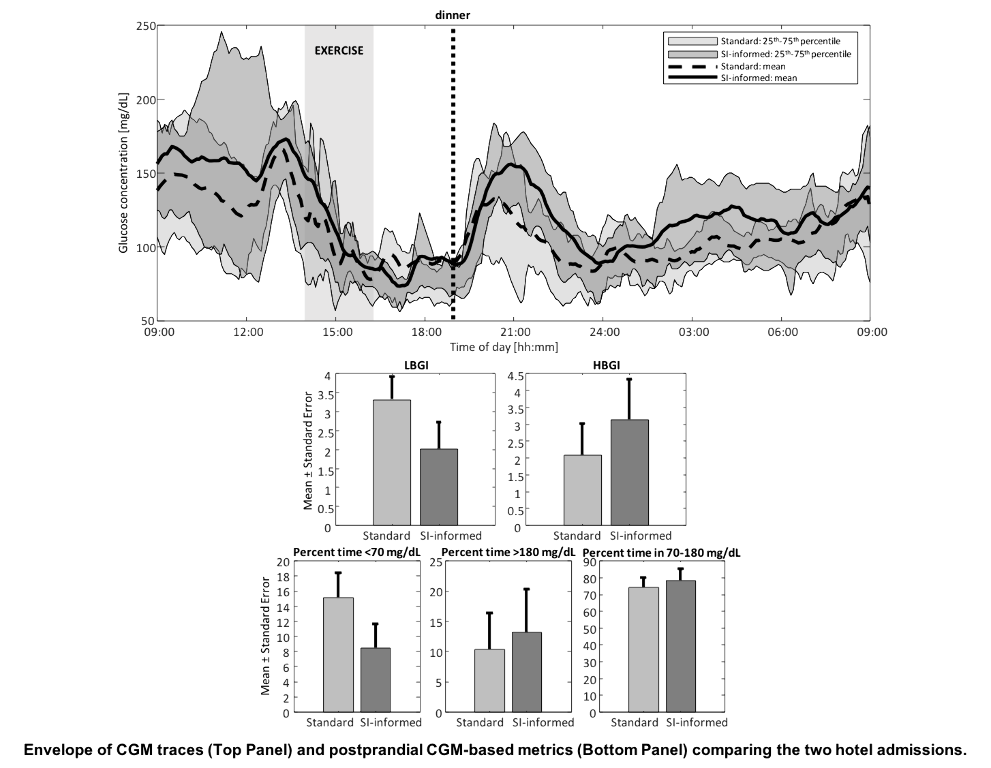57 - REDUCTION OF POSTPRANDIAL HYPOGLYCEMIA IN INDIVIDUALS WITH TYPE 1 DIABETES USING AN INSULIN SENSITIVITY-INFORMED BOLUS CALCULATOR AFTER AN AEROBIC EXERCISE SESSION
Abstract
Background and Aims
Insulin sensitivity (SI) fluctuations, e.g. driven by physical activity and exercise, complicate insulin dosing and worsen glycemic control in individuals with type 1 diabetes (T1D). At last-year ATTD, we presented in-silico results demonstrating the benefit of using an SI-informed bolus calculator to account for exercise-induced SI changes. This year, we present the results from the first clinical deployment of the SI-informed system.
Methods
Fifteen subjects with T1D (male/female:10/5, age:45.1±12.6years, HbA1c:6.9±0.9%) using continuous glucose monitor (CGM) and insulin pump completed a 4-week at-home data collection, followed by two 24-hour hotel admissions. During the admissions, participants engaged into a 45-minute early-afternoon aerobic exercise session, after which they received a standardized dinner meal. The dinner bolus was computed using a standard or SI-informed bolus calculator; the latter modulates the insulin dose according to the deviation between usual SI estimated from historical data and real-time SI. Postprandial glycemic control was assessed by CGM-based low/high blood glucose indices (LBGI/HBGI) and percent time outside 70-180mg/dL, and compared between the two admissions.
Results
A 31% exercise-induced SI increase was observed (p=0.0002). The corresponding bolus modulation allowed to reduce postprandial hypoglycemia (ΔLBGI=(–)1.3, p=0.006; ΔPERC<70=(–)6.7%, p=0.049), without significant increase in hyperglycemia (ΔHBGI=1, p=0.075; ΔPERC>180=2.8%, p=0.5) [see figure]; the total number of administered hypoglycemia treatments was reduced from 12 to seven. Sensor glucose at dinnertime did not differ between the admissions (ΔCGM,DINN=(–)0.7mg/dL, p=0.925).

Conclusions
This pilot study shows the safety and efficacy of using the proposed SI-informed bolus calculator in individuals with T1D. Future studies will be devoted to further testing the method.











